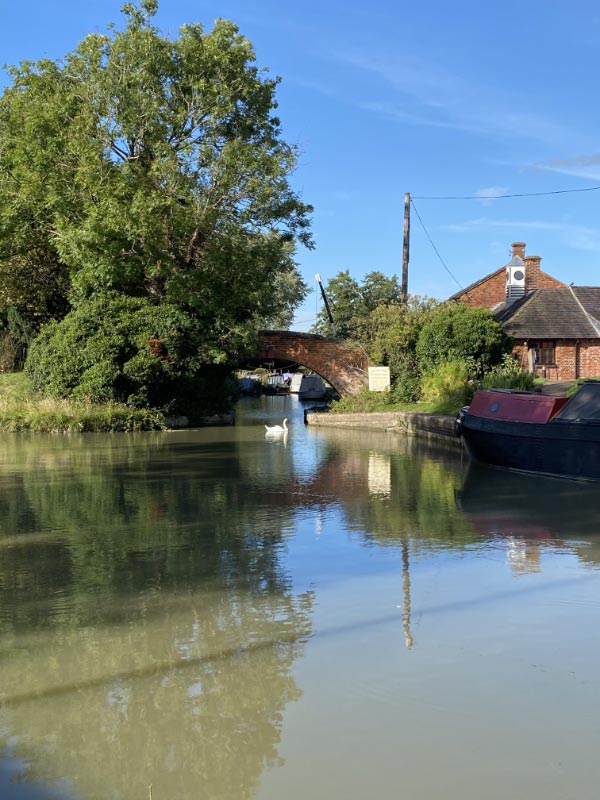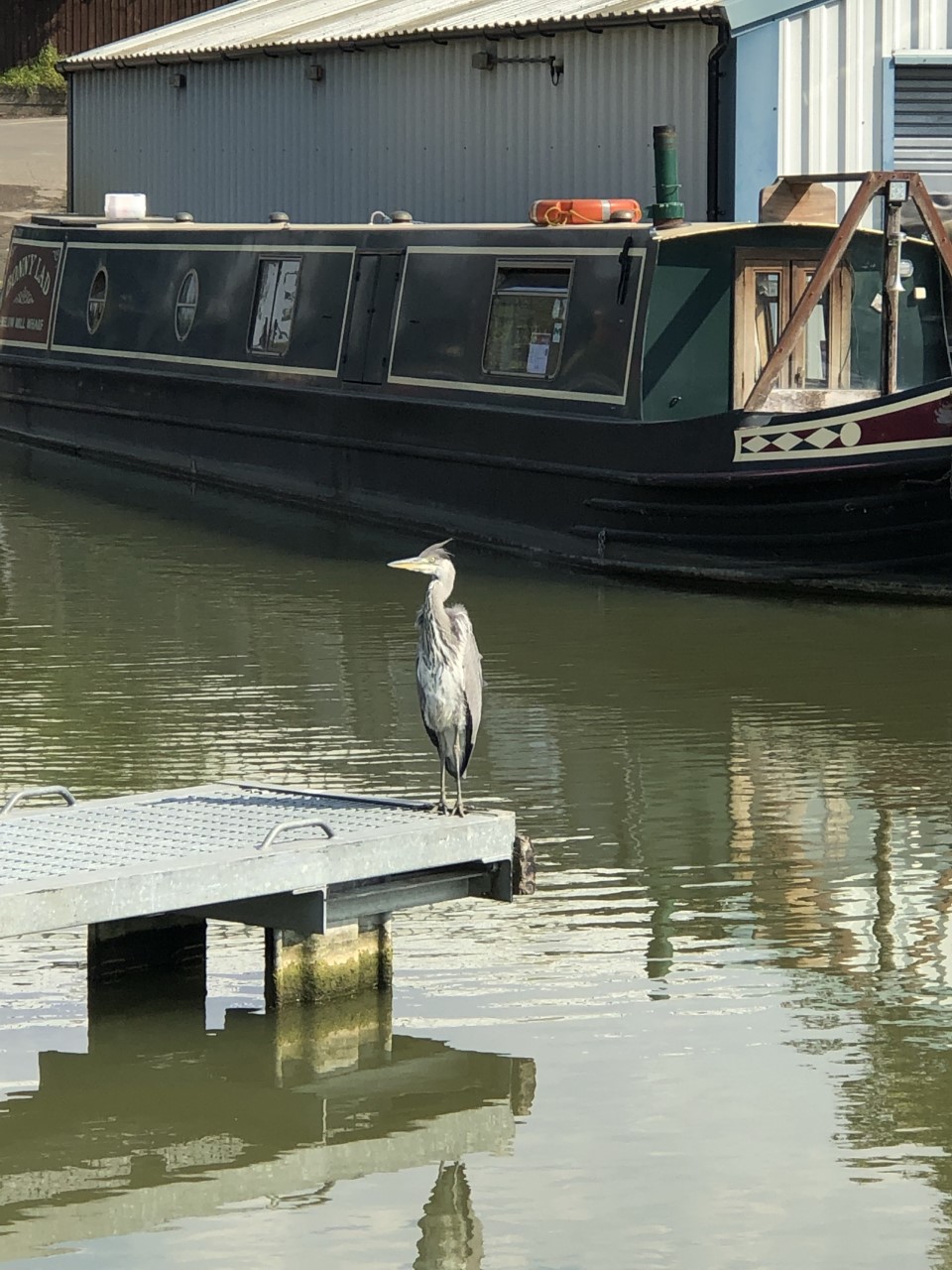Waterways Wildlife - Birds

Heron
Herons have long legs with particularly long toes, useful when wading on soft mud. Their wings are broad and rounded, often markedly bowed in flight, and they all have long sinuous necks and dagger-shaped bills. There are 64 species of Heron. Many species nest in trees in mixed colonies, while bitterns are much more secretive and nest in dense reeds.
Herons and are carnivorous. The members of this family are mostly associated with wetlands and water, and feed on a variety of live aquatic prey. Their diet includes a wide variety of aquatic animals, including fish, reptiles, amphibians, crustaceans, molluscs, and aquatic insects. Even more rarely, herons eating acorns, peas, and grains have been reported, but most vegetable matter consumed is accidental.

Common Kingfisher
The UK kingfisher is a waterside bird, which is unmistakable due to bright blue and orange plumage. If you are lucky enough to see a kingfisher on its perch, watch it closely. Once it has spotted its prey a kingfisher will bob its head up and down to gauge the position of the fish.The bird then dives into the water with its wings open, and its eyes protected by transparent eyelids. Once the fish is caught, it is taken back to the perch where the kingfisher usually stuns it before swallowing it head first.The prey of kingfishers mostly consists of fish, usually minnows and sticklebacks. However, kingfishers will also eat freshwater insects and shrimps, tadpoles newts.
It is vital for kingfishers to hold a territory with enough food, particularly during winter. If their territory doesn’t have an adequate food supply or becomes frozen over during winter, kingfishers may have to move out and find food elsewhere, bringing them into conflict with other kingfishers. Breeding pairs will usually share territories during the summer.
Kingfishers nest in burrows, usually in soft riverbanks. They have up to three broods of chicks a year and will use a different nest each time as, once the young have fledged, the tunnel is usually full of decomposing fish. Pair formation begins in February, and the eggs of the first clutch are laid in March-April. 6-7 eggs are usually laid, and are incubated by both the male and female. After 19-21 days of incubation, the chicks hatch out of the eggs. Chicks can eat up to 18 fish each per day, and they are fed in rotation by the parents. The chicks normally leave the nest when they are 24-25 days old, but can take up to 37 days if the fish supply is poor. The fledglings are fed for only a few days and then driven out of the territory by the parents, who then begin their next brood. It is estimated that only half of fledglings survive more than a week or two, and very few birds live for more than one breeding season.
Moorhen
moorhens are not ducks but belong to a group of birds known called Rails. They are quite secretive birds and often avoid people by hiding in the vegetation. They are blackish with a red and yellow beak and long green legs. Seen close-up, they have a dark brown back and wings and a more bluish-black belly, with white stripes on the flanks. Moorhens can live in cities as well as the countryside. To help them with swimming and walking on slippery surfaces they have webbed toes. A moorhen’s diet consists of water plants, seeds, fruit, grasses, insects, snails, worms and small fish. In the UK they breed in in lowland areas, especially in central and eastern England. They're scarce in northern Scotland and the uplands of Wales and northern England. UK breeding birds are residents and seldom travel far.
Mallards
Mallards are large, sociable ducks that live in rural or urban wetland habitats. Male birds have a green head and grey on their wings and belly and female birds have brown specks on their feathers. Mallards eat water plants, seeds, acorns, berries and insects.
Mallards breed in all parts of the UK in summer and winter, wherever there are suitable wetland habitats, although it is scarcer in upland areas. In the UK, mallards may be resident breeders or migrants - many of the birds that breed in Iceland and northern Europe spend the winter here.
Hobby (Falco Subbuteo)
The hobby is a small bird of prey which is about the size of a Kestrel, with long narrow wings. It's distinct from a Kestrel by it's blue-black upper feathers and cream and black streaked underbody with a red/brown patch under its tail. It breeds in June and July across northern, central, southern and eastern England, southern Scotland and south Wales. It occupies the empty nests of other birds such as Magpies and Crows, laying cluthes of two to four eggs and both the male and female feed the young until a few days after they have flegded. Best looked for near to water and hunting over woodland and heathland where there is plenty of large insect prey.
Hobbies arrive in the UK from April onwards and leave for Africa in September and October. Best looked for on warm summer days when there are plenty of dragonflies, summer chafers and other prey around.
The hobby is 28-36cm with a Wingspan of 70-92cm and Weighs 131-340g. In the UK there are 2,800 breeding pairs pairs. The Hobby has a typical lifespan of about five years.
The creator of Subbuteo Peter Adolph, called his game after his favourite love of falconry naming it after the latin name of the Hobby falcon.